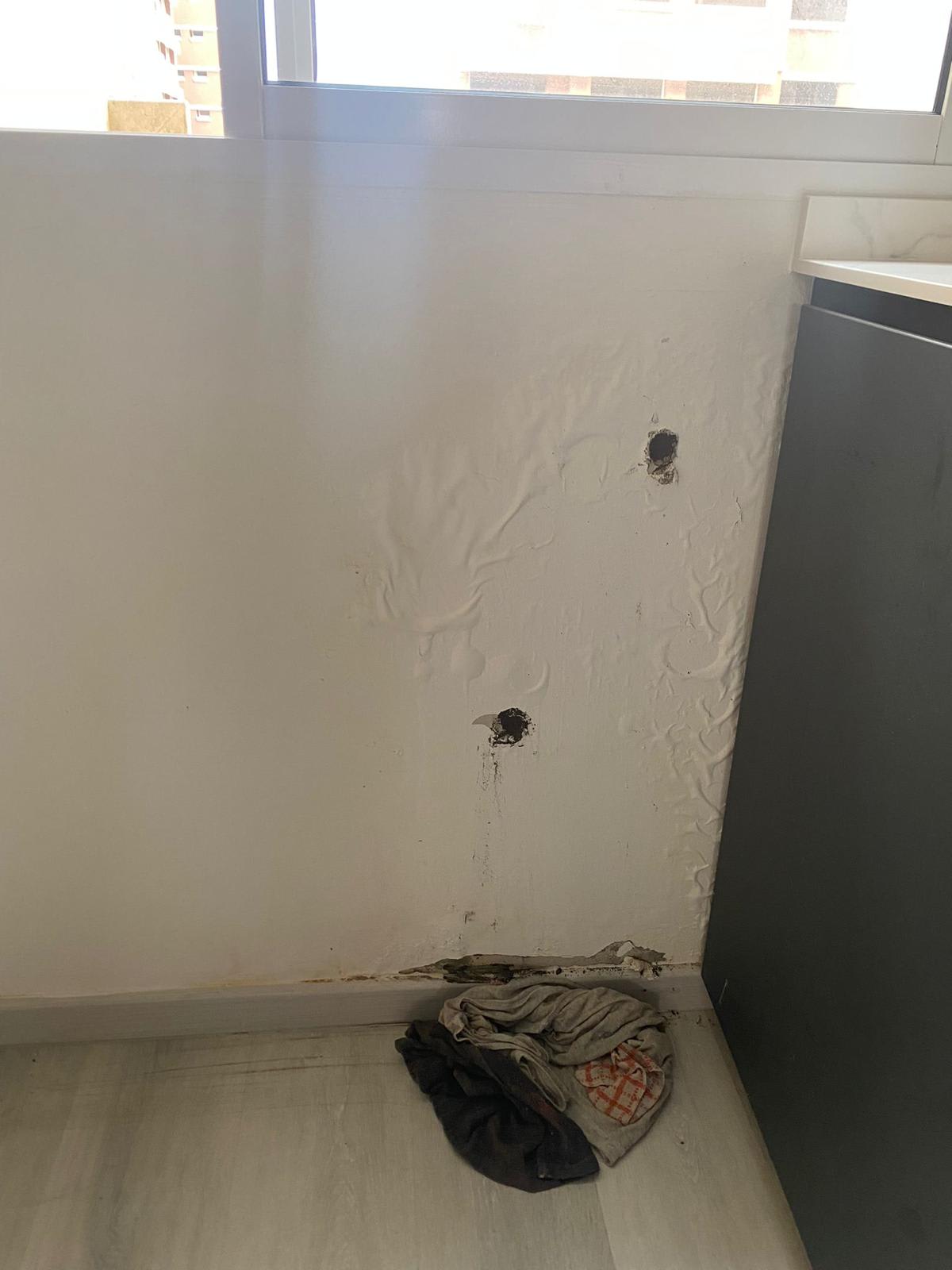https://www.channelnewsasia.com/commentary/renovation-ads-social-media-scams-contractors-price-4072736
Commentary: How I lost S$3,000 chasing a quick fix to a leaking wall
The savviest business people are those who know how to use our frustrations as leverage. Deborah Tan-Pink learns a painful and pricey lesson how not to let hers get the better of her.

File photo of renovation works. (Photo: iStock/Boogich)
This audio is generated by an AI tool.
SINGAPORE: Did I just get scammed of more than S$3,000? As I parted ways with the man I’d just handed a stack of S$50 notes to, I felt like I was trudging through water.
My body exhibited all the signs of a person who just got hit with a rude shock, but my brain was still trying to justify my decision to pay the man S$3,000 to waterproof a wall in my flat.
He wanted to charge me S$4,200 but, unfortunately for him, my bank only allowed me to withdraw a maximum of S$3,000 a day. He said he would return for the remaining S$1,200. Spoiler: He never did.
Let’s backtrack a little. A year ago, the renovation of my new flat was completed. The rainy season soon revealed that an exterior-facing wall was cracked and letting moisture in. Every time it rained, the paint on the inside would puff up. It was only a matter of time before the bubbles became a permanent fixture. Mould soon set in.

MAKE THE PROBLEM GO AWAY ALREADY
I asked my contractor to look at the issue. She said it was not her business and that I should contact my town council to send someone to repair the wall from the outside.
A year on, the wall had still not been repaired. Then I chanced across a series of advertisements on Instagram promoting inspection and repair services for water leakages in residential properties.
The ads said no hacking of tiles, walls and cabinetry would be necessary, and repairs could be completed within the day. I decided to complete the enquiry form to find out more about their services.
Within 24 hours, I received a WhatsApp message and an appointment was made for someone to do a house visit. A crew of three showed up at my doorstep the next day and the fix recommended was that they would inject a material into the wall to fill up any cracks. This material cost S$200 per kilogramme and I was assured that “not a lot” would be used.
Halfway through the repair work, the foreman said they would like to be paid in cash and the cost may run up to the thousands. Surprised, I asked, “How many thousands are we talking about?”
“Six or seven,” he replied.
I explained I was not prepared at all to pay thousands of dollars for the job. The compromise I made was to pay for the wall that they were already working on (there were two walls that needed repair, they said). The final bill came up to S$4,600 - 23kg of material had been used to patch a crack that was less than 1m long. I bargained it down to S$4,200 but that was cold comfort for the shock I had already received.
I ONLY HAVE MYSELF TO BLAME
As they collected their tools to leave my flat after they’d patched up the wall, I asked if they’d be issuing me with a receipt. They said they couldn’t as the colleague in charge of that was on leave. It was then the alarm bells in my head started to ring.
When the foreman followed me to an automated teller machine (ATM) so I could withdraw the money and pay him in cash, I asked, “Hey? Wouldn’t your company have a UEN (unique entity number) that is linked to a PayNow account?” He replied, “No, we don’t have a UEN.” The truth came crashing down: They were not a registered business. And, without a receipt, I began to wonder how I would lodge a complaint to Consumers Association of Singapore (CASE).
The final red flag revealed itself when, at the ATM, I told him I had hit the daily limit for cash withdrawal, and he’d have to return for the remainder. He asked if I had other bank accounts that I could use. He even said, “Whatever bank account you have access to – your husband’s or a relative’s – just take the money from them?”
I told him I would not use someone else’s bank account. He had already been paid S$3,000 and he could return the next day for the remaining S$1,200. That was when we parted ways.
I was so discomforted by the entire situation that I decided later that day to make a police report.
The next morning, I messaged the foreman saying that while I would not be home to hand him the S$1,200, my husband would be home to do so. I asked again for a receipt. He said he couldn’t give me one. I then asked if he could at least share some form of identification so I could have tangible proof of the transaction between us.
I’ll never know if this request scared him off because it’s been two weeks and he’s not come for the money.In the end, I have no one to blame but myself. However, I could not help but dissect the situation and wondered how I – a financial well-being podcaster and someone working in finance – could have been so stupid.
INSTA-GRATIFICATION, INSTA-SCAMS
The Cambridge Dictionary’s description of a scam is a dishonest plan for making money or getting an advantage, especially one that involves tricking people.
What I experienced wasn’t typical of the kind of scams you see in headlines of people being cheated of their life savings in phishing, malware, or “fake friend” call scams. But it was still extremely dishonest.
My mistake was assuming that a business that could advertise on Instagram was likely a legitimate one, at least one that is registered. That, along with the ease of contacting a service provider with a seemingly low-cost solution added to the appeal.
The rise of scams and online risks have been under the spotlight recently, with individuals and businesses grappling with increasingly sophisticated deceptive schemes.
The Singapore government has launched several initiatives to build an inclusive and safe digital society, including publishing safety recommendations for apps that carry out high-risk monetary transactions as well as advisory guidelines for telcos to protect vulnerable customers. However, this does not ensure people will make a good judgment call in a face-to-face transaction that came about because of a dodgy ad listing on social media.
At the end of the day, the responsibility also lies with the user. In my case, my quest for a quick fix clouded my judgment.
FRUSTRATION BE THE DEATH OF OUR WALLETS
In our fast-paced world, the allure of quick fixes is ever-present, promising immediate solutions to our challenges, needs and wants.
If we want long, fluttering eyelashes without the hefty price tag, there are magnetic lashes that promise to be just like the real thing.
If we want to get rid of a bloated tummy, there are supplements that claim to work way better than a gym membership. For a clogged sink or a choked drain pipe, a magic foam from Japan apparently is the answer.
As consumers, we don’t know the “market price” of building materials such as cement and paint.
Lots of renovation ads say they can do up a flat for less than S$30,000, but the final bill is usually more and there is no final arbiter for cabinetry and wiring pricing.
The men that repaired my wall were opportunistic and dishonest. If there are any lessons to be learnt, it is one that marketers have known all along: People will do anything to make their problems go away. In my case, that price tag was a little higher than I had expected.
Deborah Tan-Pink is the co-host of personal finance podcast Good Girls Talk About Money. She is also the Senior Vice President of Marketing and Communications at Sygnum, a digital assets banking group.







Comments
Post a Comment